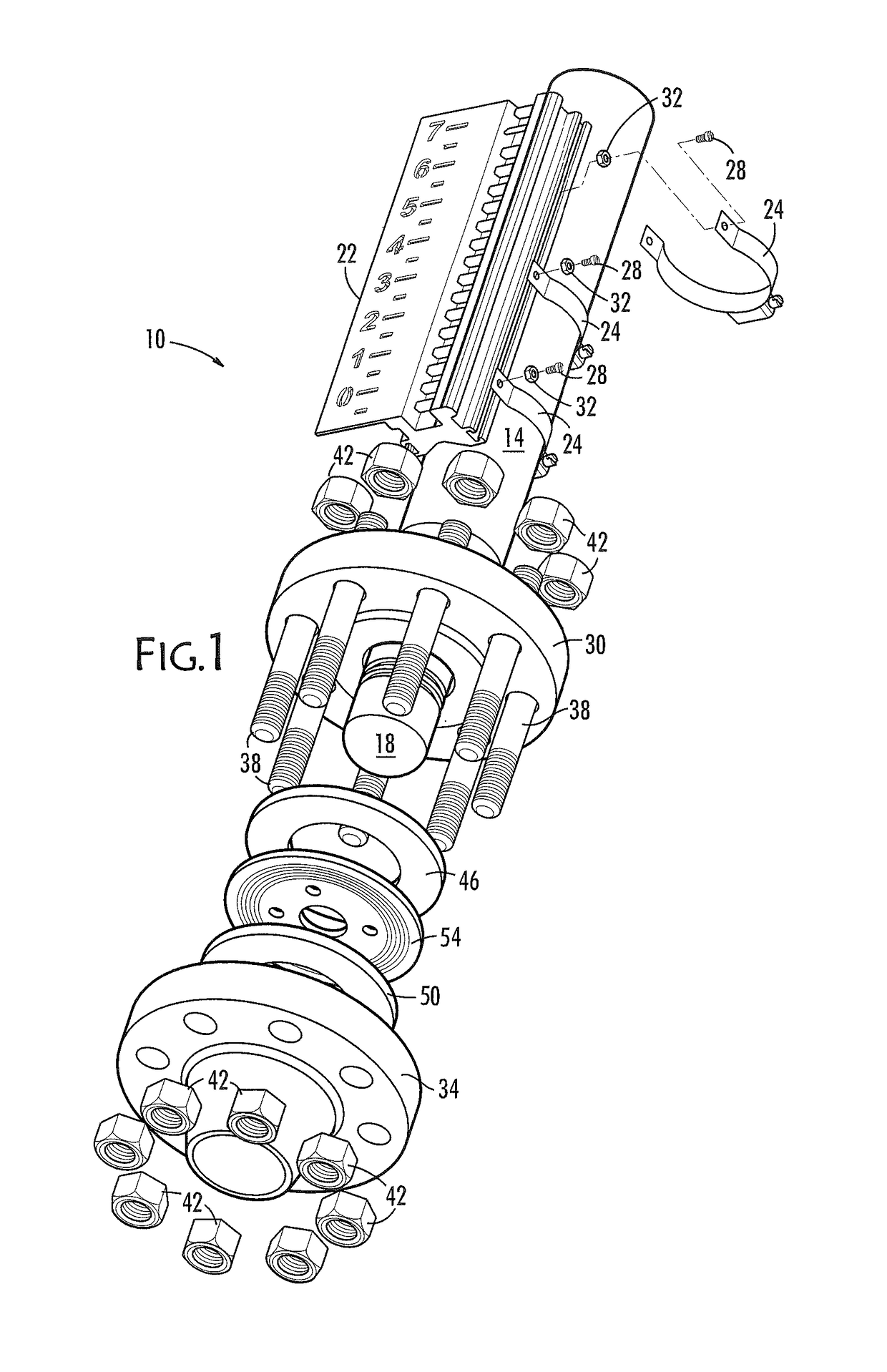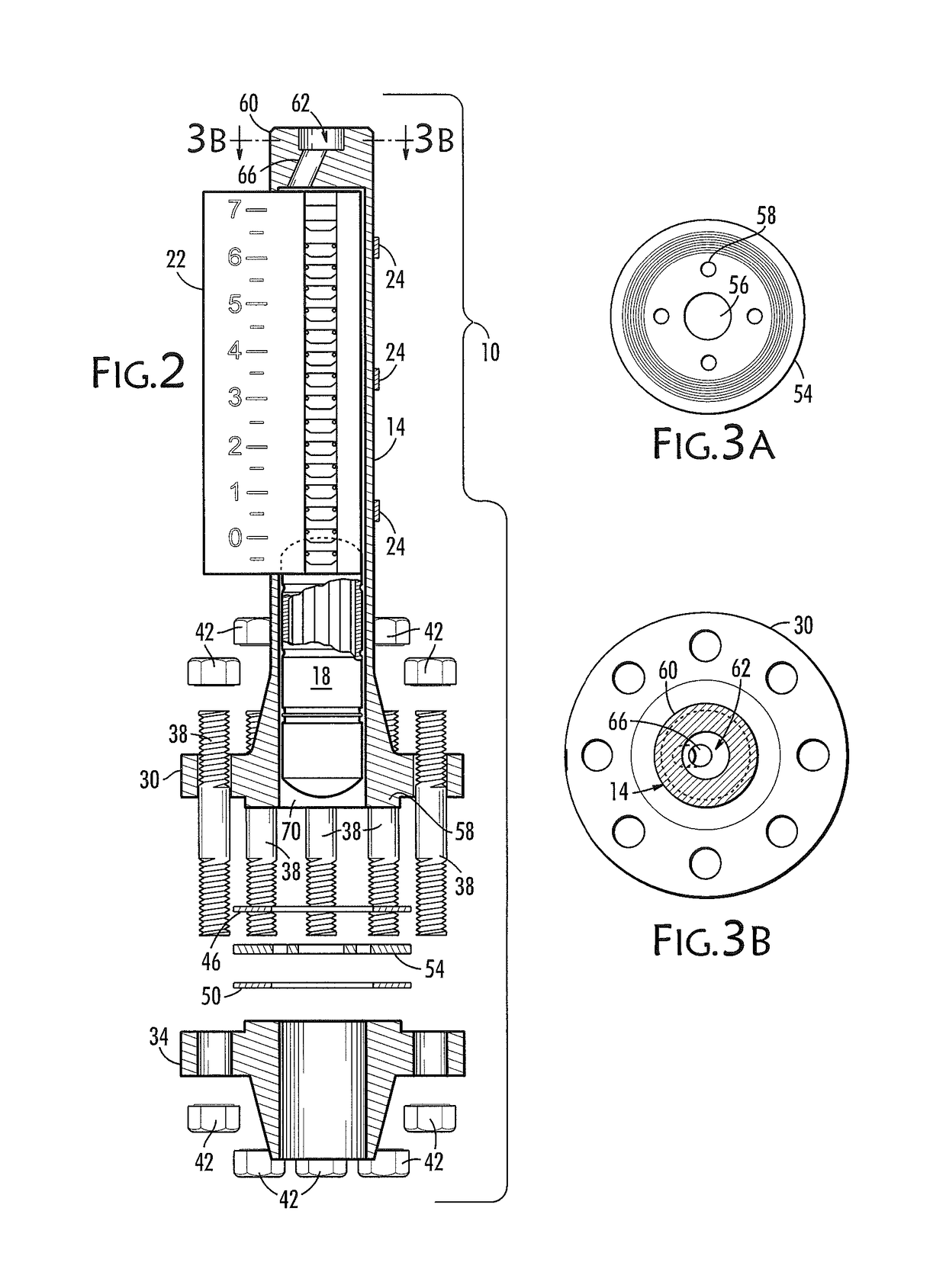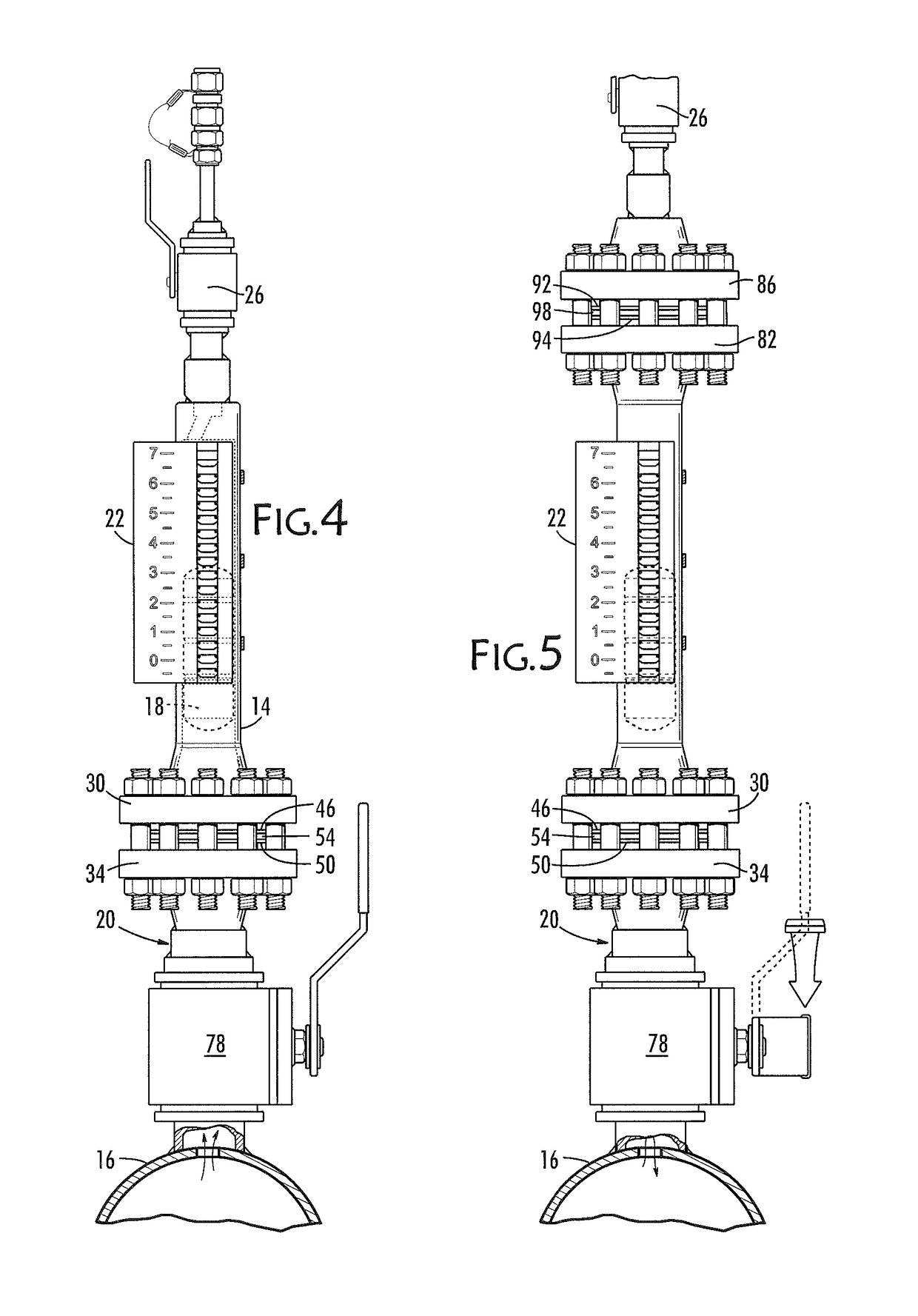Nuclear grade air accumulating, isolating, indicating and venting device
a technology of indicating venting device and nuclear grade air, which is applied in the direction of functional valve types, nuclear elements, greenhouse gas reduction, etc., can solve the problems of failure of reactor coolant pump in a similar manner, failure of the system to prevent that fuel damage, and failure of the reactor coolant pump, so as to avoid stress corrosion cracking, improve the serviceability of the present device, and facilitate the effect of maintenan
- Summary
- Abstract
- Description
- Claims
- Application Information
AI Technical Summary
Benefits of technology
Problems solved by technology
Method used
Image
Examples
Embodiment Construction
[0028]Referring now to FIGS. 1-5, the present invention is directed to a gas accumulating, isolating, indicating and venting device, generally referred to by reference number 10, for use in venting gas from an otherwise fluid-filled piping system. Device 10 is intended to be connected to a system pipe 16 (FIGS. 4 and 5) containing a fluid under pressure, and ideally connected to system pipe 16 at a local high point in elevation with respect to the adjacent balance of system pipe 16 so that the interior of device 10 is in fluid communication with the interior of system pipe 16. Device 10 extends above that high point via a coupling 20 so that gas in system pipe 16 will rise to that high point and from there flow through a hole made in system pipe 16 into coupling 20 and thence to a standpipe 14 where it will accumulate and remain isolated from the system until it is vented. The gas remains accumulated and is isolated by its own buoyancy. Even if the underlying system pipe 16 is calle...
PUM
 Login to View More
Login to View More Abstract
Description
Claims
Application Information
 Login to View More
Login to View More - R&D
- Intellectual Property
- Life Sciences
- Materials
- Tech Scout
- Unparalleled Data Quality
- Higher Quality Content
- 60% Fewer Hallucinations
Browse by: Latest US Patents, China's latest patents, Technical Efficacy Thesaurus, Application Domain, Technology Topic, Popular Technical Reports.
© 2025 PatSnap. All rights reserved.Legal|Privacy policy|Modern Slavery Act Transparency Statement|Sitemap|About US| Contact US: help@patsnap.com



